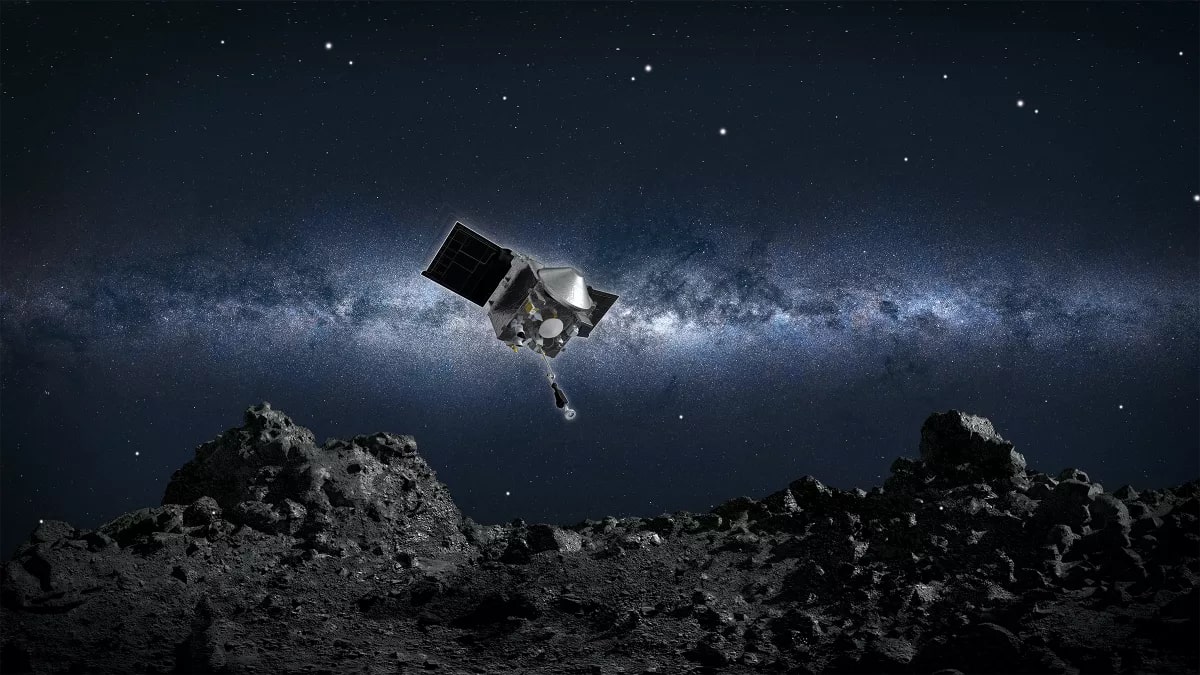
Scientists have discovered the essential building blocks to life on a sample from a distant asteroid.
The sample, which the OSIRIS-REx spacecraft collected from the asteroid Bennu and returned to Earth in 2023, contains all five nucleobases — the “letters” that make up DNA and RNA — alongside mineral compounds, all of which have never previously been seen on extraterrestrial rocks.
The minerals are rich in carbon, sulfur, phosphorus, fluorine and sodium, making them resemble those left in the crusts of dried lake beds on Earth — except they date to the birth of the solar system 4.6 billion years ago. These elements, alongside the five nucleobases that make up DNA and RNA, are the basic building blocks for life on our planet.
The two teams of researchers who made the discoveries published their findings Jan. 29 in two papers in the journal Nature Astronomy.
“We now know from Bennu that the raw ingredients of life were combining in really interesting and complex ways on Bennu’s parent body,” study co-lead author Tim McCoy, curator of meteorites at the Smithsonian’s National Museum of Natural History, said in a statement. “We have discovered that next step on a pathway to life.”
Bennu is a potentially hazardous asteroid that has a 1-in-2,700 chance of striking Earth in the year 2182 — the highest odds of any known space object. But scientists are more interested in what’s trapped on the space rock: As a carbon-rich asteroid, it likely contains many of the primordial molecules present when life first emerged on Earth.
Related: NASA’s OSIRIS-REx mission almost bit the dust — then Queen guitarist Brian May stepped in
OSIRIS-REx launched in September 2016 and traveled 200 million miles (320 million kilometers) to reach Bennu.
Once there, the spacecraft orbited the asteroid for nearly two years as flight engineers searched for a landing site. Upon making contact with the space rock, OSIRIS-REx fired a burst of nitrogen from its Touch-and-Go Sample Acquisition Mechanism to stick the landing and prevent itself from sinking through the asteroid. The nitrogen burst captured a 4.29-ounce (121.6 grams) sample in the process.
In October 2023, the sample was brought to Earth aboard OSIRIS-REx’s capsule, which reached speeds of up to 27,000 mph (43,000 km/h) before it deployed its parachute and landed safely in the Utah desert. To avoid contamination, the sample container was taken to a clean room before being opened.
The researchers behind the first study received slices of the Bennu sample, which they examined under a scanning electron microscope. This enabled the team to study features on the sample’s surface with a resolution of one-hundredth the width of a human hair.
The scientists discovered sodium carbonate, typically found in evaporated lakes that once contained life on Earth, on the space rock’s surface. Within the sodium carbonate, the team found 11 minerals that are important precursors for organic compounds. The mineral compositions differed subtly from those found on our planet; being rich in phosphorus and poor in boron, when the reverse is true in Earth’s lakes.
The researchers think brine similar to that found on Bennu could also exist on other bodies in the solar system, such as the dwarf planet Ceres and Saturn’s icy moon Enceladus.
In the second study, conducted by scientists in Japan, a separate piece of the sample was also found to contain the five nucleobases — adenine, guanine, cytosine, thymine and uracil — which combine with ribose and phosphate to form DNA and RNA, the ladder-like structures that make up the genetic code of all life on Earth.
This is the first time that scientists have found these nucleobases on a distant asteroid. In 2023, a sample taken from the Ryugu space rock by the Hayabusa2 spacecraft was found to contain uracil, yet the other nucleobases were missing.
It’s unclear what this means for life beyond our planet. While the existence of these minerals on Bennu is a sure indication that the asteroid had the right ingredients for life, the researchers are unsure if the asteroid’s environment was too harsh for the compounds to grow into complex organic structures. To further investigate, the scientists plan to reexamine meteorites in their collection for similar salts and compounds.
“We now know we have the basic building blocks to move along this pathway towards life, but we don’t know how far along that pathway this environment could allow things to progress,” McCoy said.
